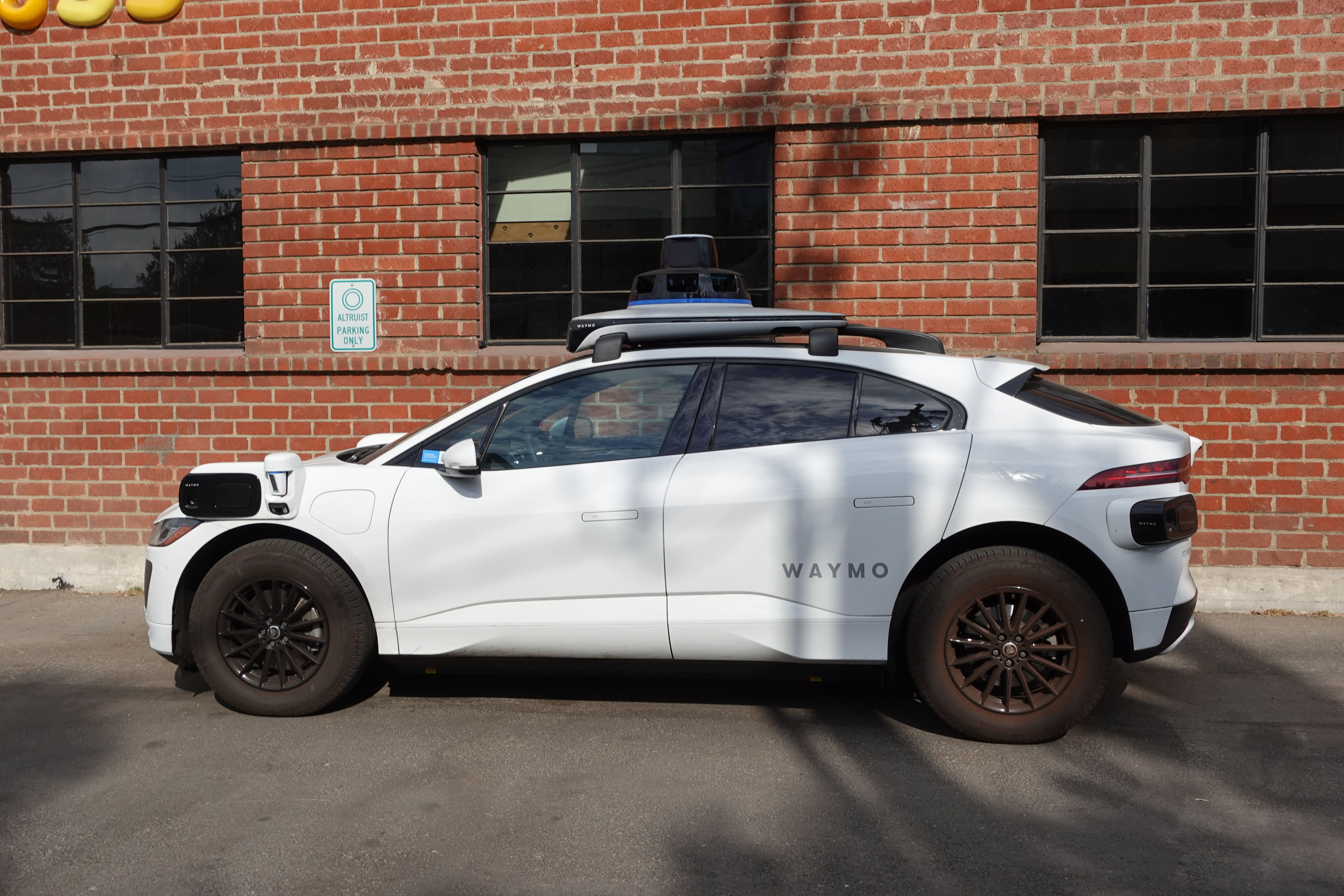Amid Waymo’s rise in LA, experts consider positive and negative repercussions

A Waymo vehicle is pictured. The third city following San Francisco and Phoenix to welcome Waymo to its streets, Los Angeles has received the driverless taxis with both excitement and caution. (Jeannie Kim/Daily Bruin senior staff)

By Alicia Park
Jan. 30, 2025 6:50 p.m.
This post was updated Jan. 31 at 12:32 p.m.
Driverless taxis are no longer futuristic dreams for Angelenos.
Autonomous ride-hailing platform Waymo launched to the Los Angeles public last November, deploying around 100 vehicles in a 79-square-mile area from Santa Monica to downtown. The third city following San Francisco and Phoenix to welcome Waymo to its streets, LA has received the novel technology with both excitement and caution.
Paxton Misemer, a fourth-year communication and political science student, said she has been taking Waymos two to three times a month with her friends since fall quarter, primarily for the social experience.
“I feel bad asking an Uber (driver) to play our own music or listen to funny videos we’re all talking about,” Misemer said. “It really extends the hangout in a way where we feel really comfortable inside the Waymo.”
Alphabet Inc.-backed Waymo’s innovative technology and social appeal have helped the driverless taxis gain traction since the company began publicly offering rides in 2018. In 2024, the number of trips across California increased fourfold since January to over 300,000 trips in August, according to Waymo’s latest data submitted to the California Public Utilities Commission. The data reflects Waymo vehicles deployed in LA and San Francisco, where Waymo has been operating since late 2022 and opened to the general public last June.
Helping drive this growth is Jiaqi Ma, an engineering professor and director of the UCLA Mobility Lab. Since the inception of the lab, Ma said his team has been working on research to develop autonomous vehicle technologies and policies for companies including Waymo.
Waymo’s launch in a metropolitan city like LA is a necessary step for the technology to learn and adapt to new environments, so that the company can expand to more locations, Ma said. He added that Waymo’s precaution exercised by slowly deploying vehicles across limited areas is important, given autonomous taxi company Cruise’s license was suspended in California in 2023 after a technological error resulted in one of its vehicles running over a pedestrian.
“This is still a very cautious process,” Ma said. “But this has to be a balance. Technology has to innovate.”
As Waymo works to build trust with potential users in its early stages, Ma said research from the company’s external partners like his lab is helping to accelerate innovation that can create immense value for stakeholders.
For example, Waymo uses entirely electric Jaguar I-PACE vehicles that prevented over 13 million pounds of CO2 emissions last year, according to the company website. Auyon Siddiq, an assistant professor at the Anderson School of Management, said the entirely electric fleet can contribute to combating climate change and supporting California’s environmental goals.
Additionally, the San Francisco Standard reported Waymos have become an increasingly popular option among local parents who may not always have time to drive their children to and from school but still want to track and ensure the safety of their children’s rides. After rideshare platforms Uber and Lyft faced thousands of claims from passengers of harassment and sexual assault by drivers, the CPUC imposed stricter reporting and preventative measures for driver-inflicted crimes starting in 2022, according to the LA Times.
In addition to safety, riders can also benefit from significantly lower prices in the future. While Waymo’s prices are currently competitive with Uber and Lyft, Siddiq said prices of rides can start to decrease once Waymo’s revenue begins exceeding the costs it took to start the business. However, he added that this may come at the expense of the entire industry, as prices on on ride-hailing apps are determined by algorithms which analyze how competing services are priced in the same location.
“When you eliminate this major cost of paying the drivers, it allows (autonomous ride-hailing) companies to now aggressively reduce their prices,” Siddiq said. “This ability for them to aggressively reduce their prices can actually instigate a price war, and it can actually reduce profit for all companies.”
The price war could have far-reaching consequences, especially for ride-hailing drivers who may start to see lower wages or even lose their jobs.
Sergio Avedian, a gig economy consultant and senior contributor at media outlet The Rideshare Guy, started driving full-time in LA eight years ago. He said drivers are already facing the pressures of lower wages, recalling that he made around $60 an hour when he first started, but can barely make around $25 an hour today on top of rising gas and car maintenance costs.
Avedian added that while Uber and Lyft sourced highly paid professional drivers when they were founded in 2009 and 2012, respectively, the companies began starting to pay their drivers less as they struggled to make a profit. Today, the companies rely heavily on immigrants and workers with limited career options, and continue to face strikes and lawsuits from drivers demanding better pay and working conditions, he said.
For 48-year-old Shane Watson, rideshare driving was the only option after he lost his job and his mother in 2021. Though he has started to see an increasing number of Waymos in LA, Watson said he believes in the value of a human driver.
“We have to maintain the car. We have to clean the car. We do a lot of things for passengers,” Watson said. “They have no idea – until they make a ‘better’ idea – of what we went through to get ready to pick them up and drive for them.”
Despite her familiarity with Waymo, Misemer said she still opts for Uber and Lyft at least 10 to 15 times a week to commute to work and run errands as an out-of-state student without a car. Even though prices are similar, she said she not only enjoys having conversations with drivers but also can book rides faster on Uber and Lyft because of their larger pool of drivers compared to Waymo.
Avedian added that despite concern from his driver community about these robotaxis, he estimates it would take five to eight years before Waymo can scale up their around 100 vehicles in LA to disrupt the more than 100,000 Uber drivers in LA County.
“We see them (Waymos) all the time, but for ourselves, the demand is still there because they don’t have enough density, they don’t have scale, they don’t have enough cars,” Avedian said.
While experts like Ma and Siddiq continue to research and improve autonomous technology to ensure safety and accessibility, Watson said he hopes to see a gradual adoption of driverless taxis that doesn’t negatively impact human workers.
“It (autonomous technology) sounds great on paper, but in reality, it’s not there yet,” Watson said. “There’s got to be a balance between people and technology.”




